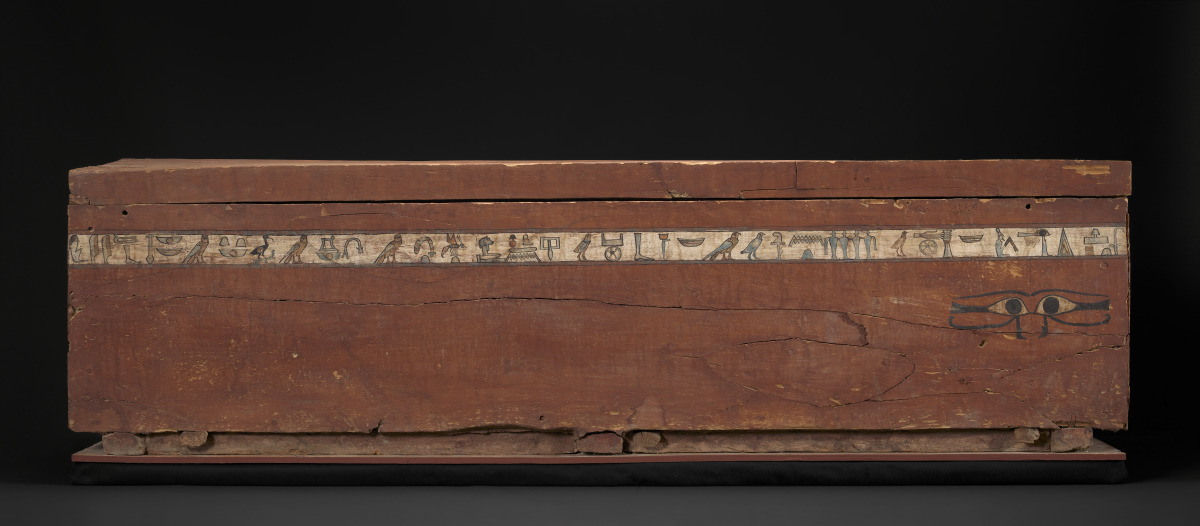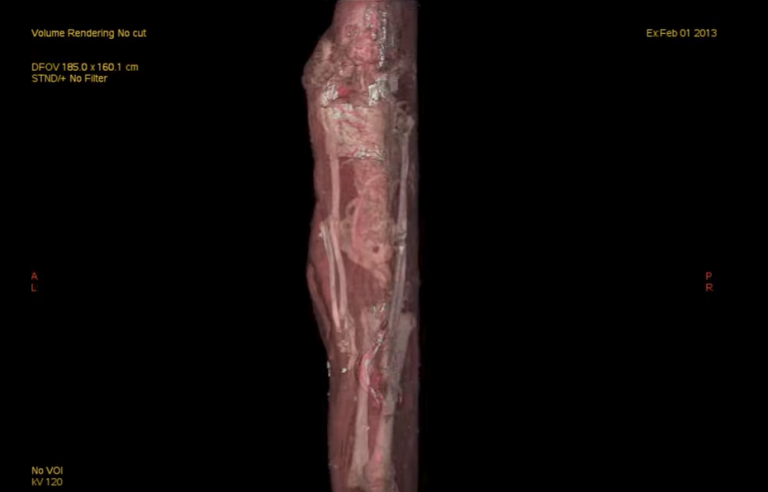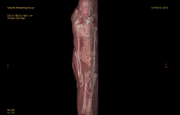
Coffin and Mummy of Tjeby (Primary Title)
Unknown (Artist)
This coffin, like many wooden objects from ancient Egypt, consists of small pieces of wood that have been pegged together. The single line of text decorating the coffin’s lid and chest records Tjeby’s name and titles (Count and Sealbearer of the King of Lower Egypt) as well as prayers to protect him in the afterlife. Tjeby’s mummy was placed on its left side so that he could look out through the wadjet eyes painted on the exterior. The wadjet or Eye of Horus (the falcon god), was often used to ward off evil; the two eyes here served to protect Tjeby on his journey through the underworld.
Dynasty 11
First Intermediate Period
Adolph D. and Wilkins C. Williams Fund
Image released via Creative Commons CC-BY-NC
Tjeby’s CAT Scan
0:18As part of its scientific investigation into its collection, in 2013 VMFA worked with the private medical imaging company HCA and Dr. Jonathan Elias of the Akhmim Mummy Studies Consortium to make a 3D CT-scan of Tjeby, the museum’s First Intermediate Period mummy. This led to new insights into the life and times of Tjeby, who lived some 4,000 years ago.
Tjeby’s CAT Scan
0:18Some object records are not complete and do not reflect VMFA's full and current knowledge. VMFA makes routine updates as records are reviewed and enhanced.



